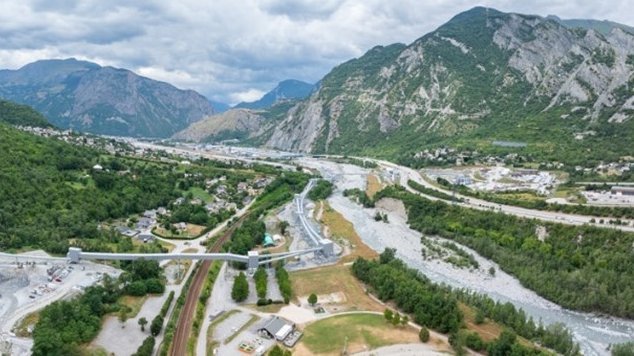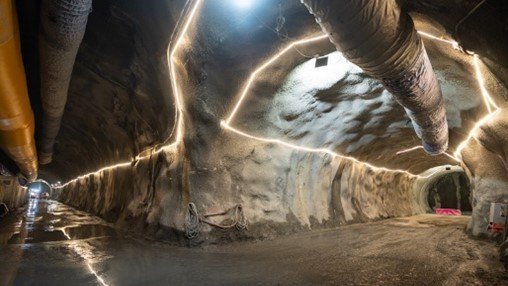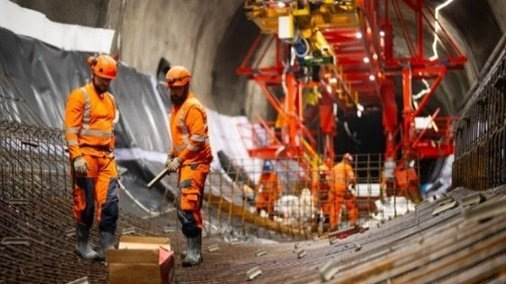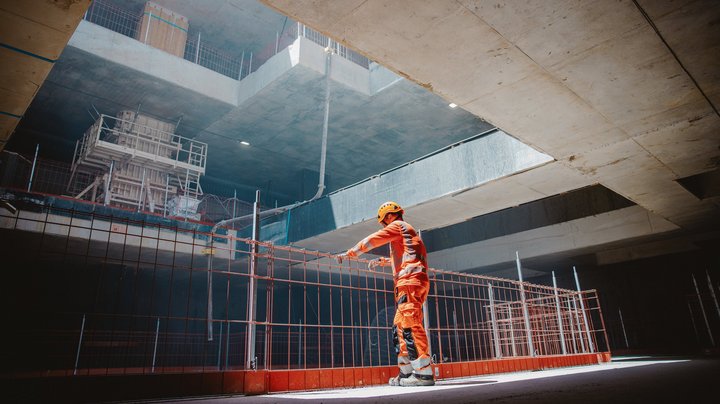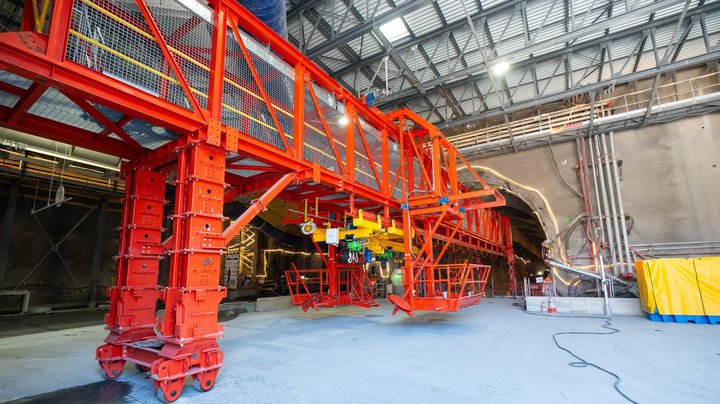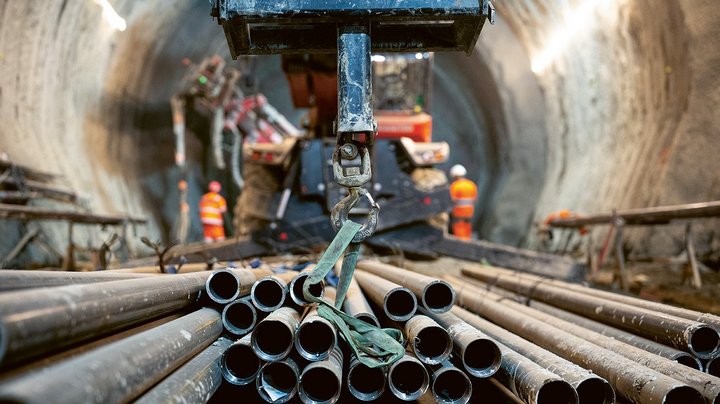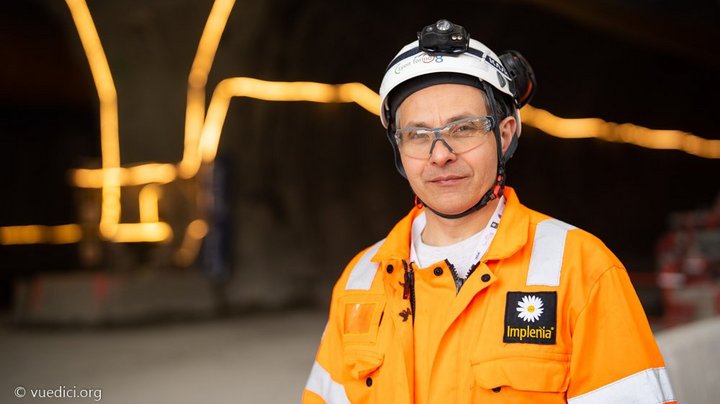More effective than any communication campaign
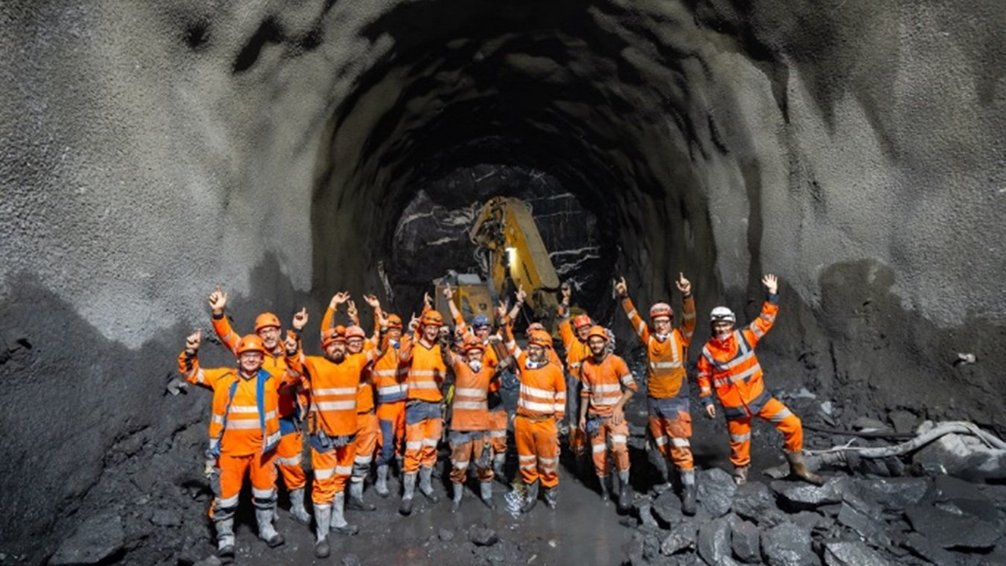
Ombeline, how can outsiders visit the construction site?
Ombeline Bredow: There are different types of visits: Professional visits for subcontractors, suppliers, media, etc.; visits for the non-professional public - these are very popular and take place on a fixed Thursday each year; namely Thursday; and the open days for the general public, which were organized in collaboration with TELT, the client of the project, in June 2023 and October 2024. I am responsible for the external tours and for organizing the open days.

"We have already shown the construction site to more than 5,000 visitors."
Ombeline Bredow, Head of Communications at the CO08 construction site, entrance to the base tunnel of the Lyon-Turin construction site
How many visitors do you receive for these visits?
We receive an average of 800 visitors per year for the external tours, spread over around one hundred tours. After three years of construction, that's more than 2500 visitors. On the open days, we received 1,200 visitors on the first occasion and more than 1,500 on the second. That's a total of more than 5,000 external visitors that we were able to welcome to the construction site to show them the works
Who comes to the tours?
The public tours organized on Thursdays attract a diverse audience: Associations, professionals, researchers, students or politicians, always in groups, often several throughout the day. Our client manages the requests and the calendar. The open days are open to everyone, prior registration is required. Visiting dates are usually fully booked several days in advance. Most visitors come from the Rhône-Alpes region, from a maximum radius of 200 to 300 km, but we have also had visitors from Nantes, Paris or Bordeaux, and in May 2024 we had the honor of receiving Gabriel Attal, the former Prime Minister, accompanied by several members of the government.
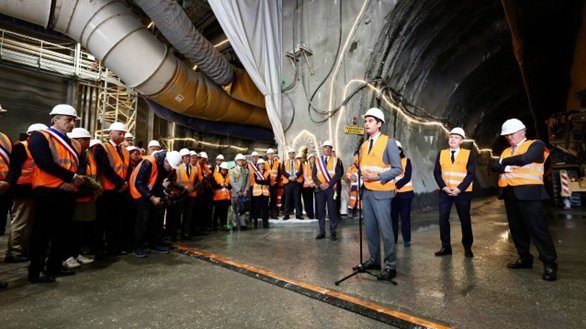
How does a viewing work?
The tour lasts around three hours and takes place in two stages. We start with a presentation by TELT in the conference room, in which the Lyon-Turin project is presented in detail. This first part is followed by a safety briefing, the issue and donning of personal protective equipment and then a tour of the tunnel. For safety reasons, groups are limited to seven people, who are accompanied by a member of the consortium and a representative of the client.
How do you ensure the safety of visitors?
The safety briefing covers several important points: the use of the emergency mask; the location of the survival cabins in case of fire; and the mandatory use of personal protective equipment. We also make sure that no one suffers from any health restrictions that would prevent them from descending underground.
Visitors are then given an emergency mask and change before boarding a shuttle bus that takes them to the site control center. There, the team checks the conditions for access to the underground. Access is strictly forbidden during blasting operations or when loading explosives. Each visitor receives a geolocalized badge to ensure maximum traceability and safety. Access to the excavation site is strictly regulated: Only professionals or people with a legitimate interest and with the approval of the management have access in very limited numbers.
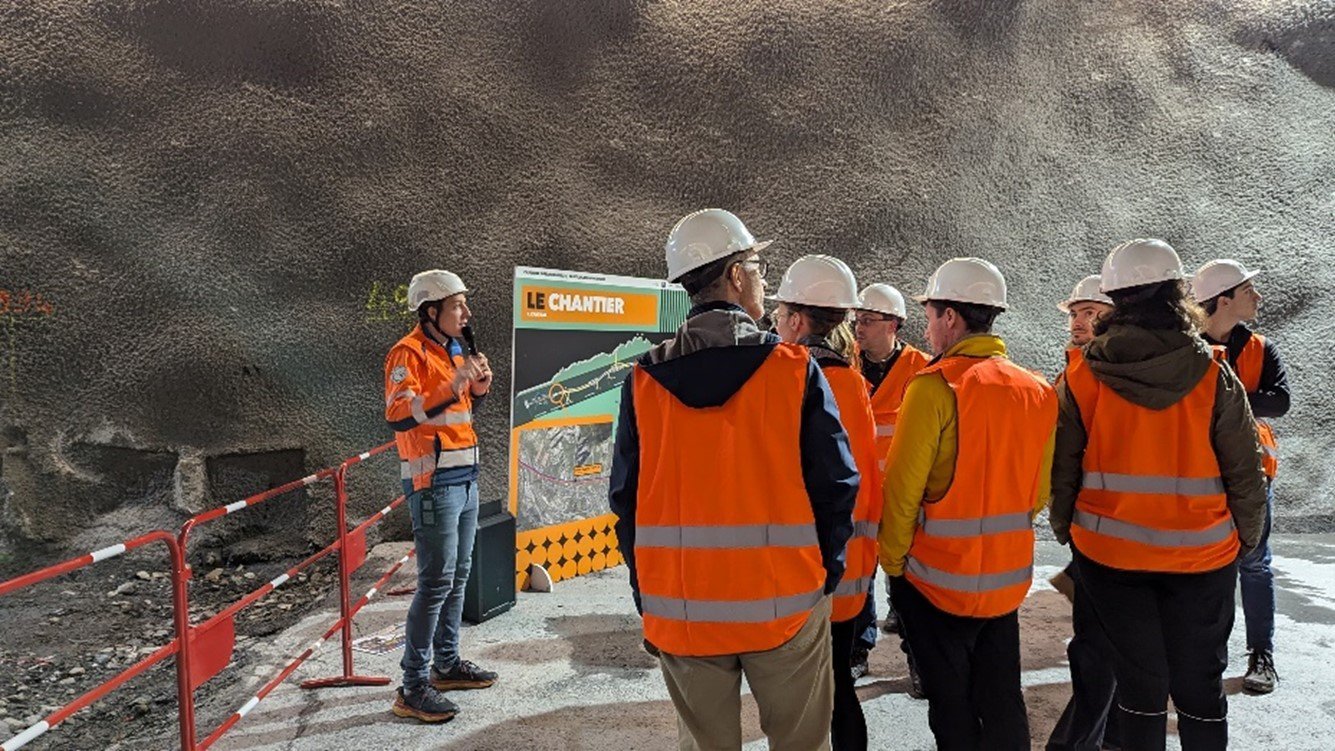
What do visitors get to see on the construction site?
During the standard tour, the groups stop at the entrance to the tunnel to observe the cladding work and the assembly of the tools outside. They also see our symbolic statue of St. Barbara, the patron saint of miners. Afterwards, we go to a mining area (side tunnel), depending on the current traffic plan, to explain the different phases of mining and the work to be done. On the way back, we take a different tunnel and can show the machines used for the excavation, such as dump trucks or drilling jumbos.
What are visitors particularly interested in?
First and foremost, people come to discover the tunnel and follow the progress of the work. If access to the tunnel is not possible at a particular time, we direct them to the "Arc" area, where they can view the crushing plant, the water treatment plant and the conveyor belt. The most frequently asked questions concern the use of explosives, the management of water and excavated material, the daily routine of the workers and the organization of work underground. We also received several major French media outlets - TF1, France 2, BFMTV, Arte - who came to document and shed light on the miners' everyday life on the site.
Are there any details that surprise everyone?
People are always impressed by the scale of the work and the efficiency of the machines used on the site. The underground is a world of its own, with its own rules, a unique atmosphere and, above all, passionate miners who work there with remarkable dedication. It's a reality that's hard to imagine if you haven't experienced it for yourself.
What is the purpose of the tours?
The visits serve several important purposes. They are intended to inform the public about the progress of the work, upcoming measures and facilities that have already been built. They are intended to show the care with which the work is carried out: in compliance with safety regulations, with competence and professionalism. They are intended to make our know-how visible by presenting the technical complexity of our construction sites and highlighting the expertise of the companies in the GPT Group. But they also serve as a platform for exchange and inspiration, to attract new talent or simply to arouse interest. And to highlight the work of our employees, which often takes place in the background but is essential to the success of the project.
How does public relations work improve relations with the local population?
The village of Saint-Julien-Mont-Denis is located directly above the construction site. It is therefore crucial to keep residents informed and reassure them. We are taking numerous measures to reduce the negative impact of construction site operations: Everything is strictly controlled, monitored and analyzed. But if nobody talks about it, if nobody reports on it, how are people supposed to find out about it? Without information, everyone forms their own opinion - which is often far removed from reality
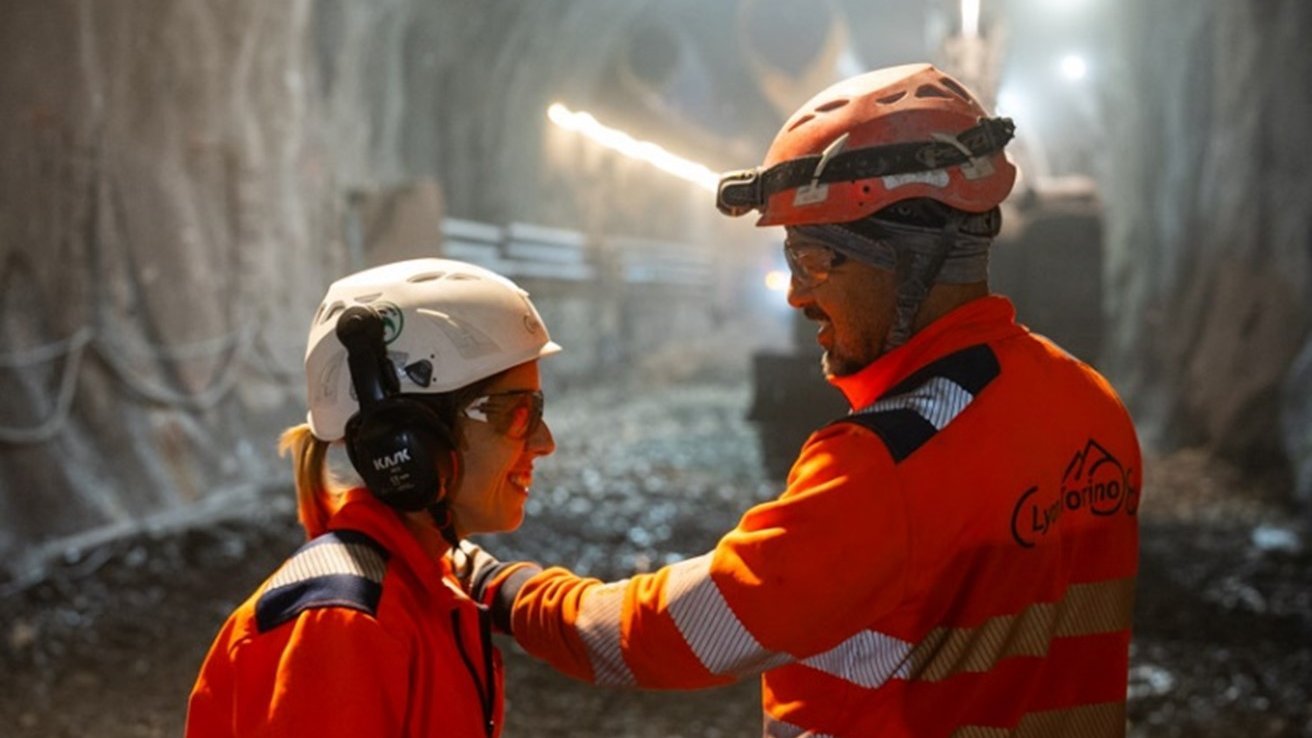
Why are you so committed to these visits?
I am delighted to be able to share our everyday life and highlight the remarkable work of our employees. The commitment and solidarity on the construction site fills me with deep admiration. These visits are also an excellent opportunity to showcase our companies' expertise and promote the Implenia name in France and internationally. Attracting the attention of 5,000 people in person, who really listen, is much more effective than a communication campaign on the Internet! Even if these visits take up at least one day a week, they are extremely rewarding. According to the visitors, they enable them to share experiences, create synergies, make contacts with the right people and expand their own network.
The TELT project

The Turin-Lyon railroad project is a high-speed line currently under construction. The centerpiece of this project is the 57.5 km long Mont-Cenis base tunnel, which forms a new railroad axis between Lyon and Turin. The entire new line covers around 270.8 km, 140 km of which are in France and 46.7 km in Italy. The project is an important part of European rail infrastructure planning and is supported by the EU. It is intended to speed up rail transit traffic in an east-west direction between France and Italy and is part of TEN rail axis no. 6 between Lyon and Budapest.
Implenia is part of the TELT project, which includes the construction of the Mont-Cenis Base Tunnel. Implenia has been commissioned to build Lot 3 of the tunnel in 2021, together with the consortium partners NGE, Rizzani De Eccher and Itinera Spa1. The project comprises the construction of two 2,839 m long tubes in the direction of Italy, including 11 safety cross-passages and 140 m of cut-and-cover tunnel.
Key figures
| 5.6 km | Tunnel to be excavated |
| 1'018 m | in umbrella vaults |
| 1'078 | arches to be laid |
| 11 | Safety engines |
| 600'000m3 | Earthworks |
| 2'700m2 | acoustic hangar |
| over 127'000m2 | construction site equipment |
| 5 years | Construction time |
| EUR 228 million | Order volume |
| Over 300 people | on site at peak times |


